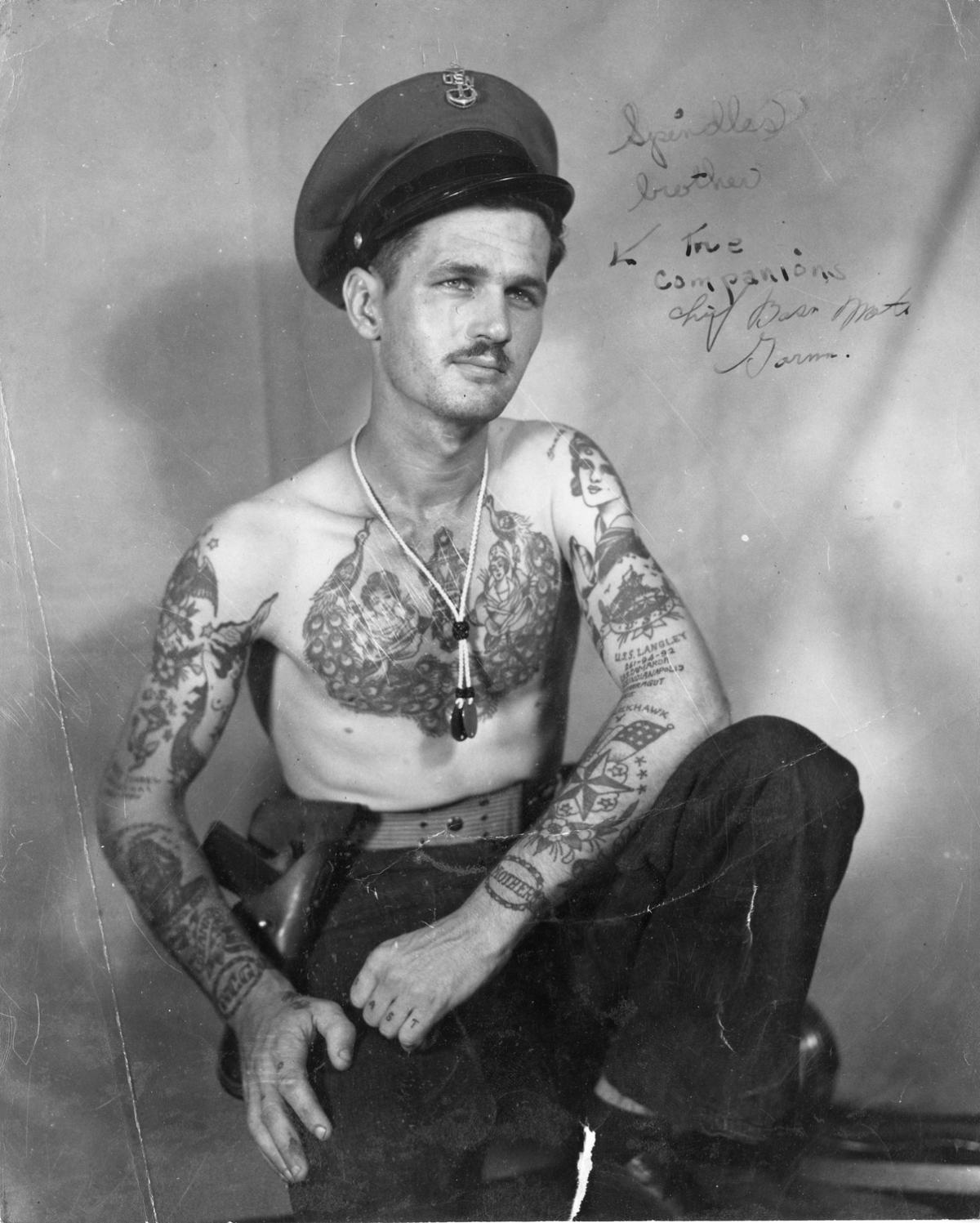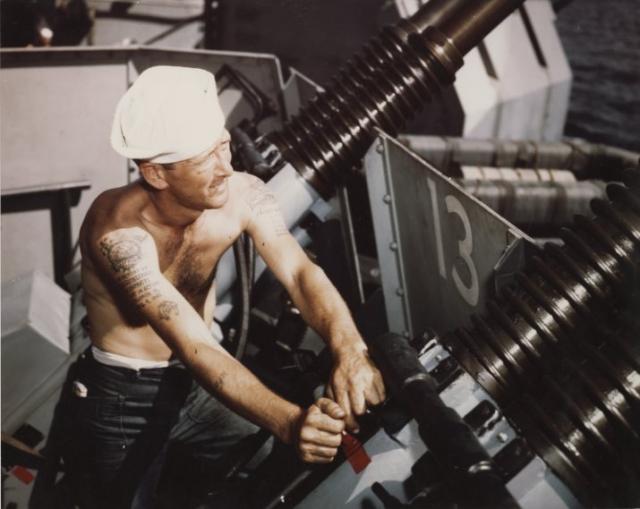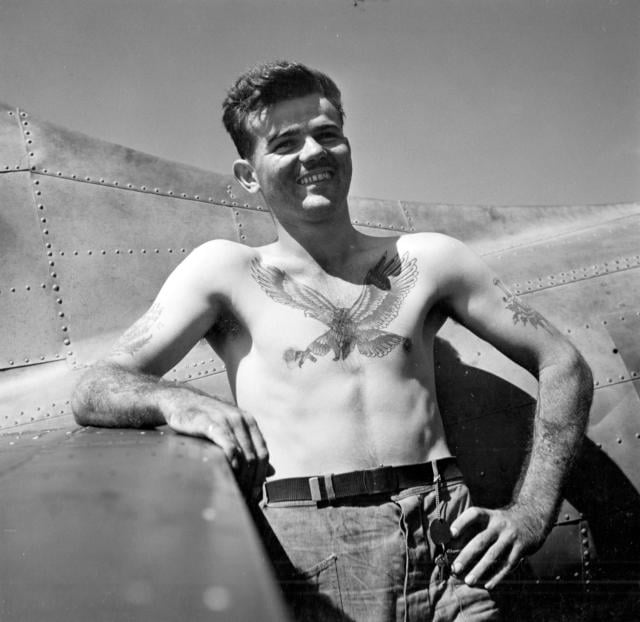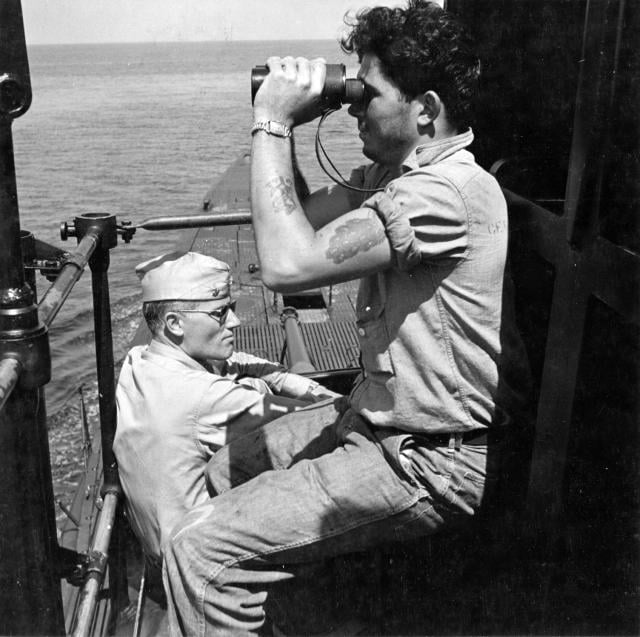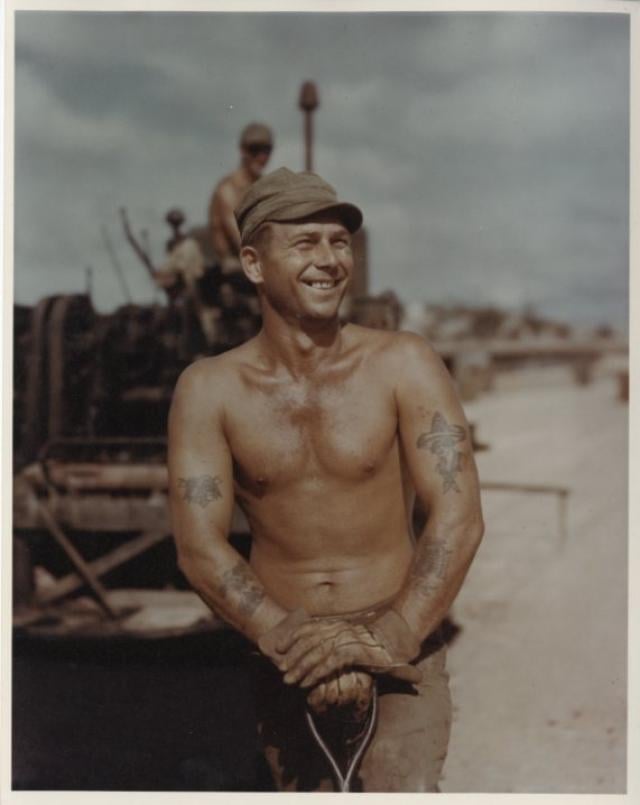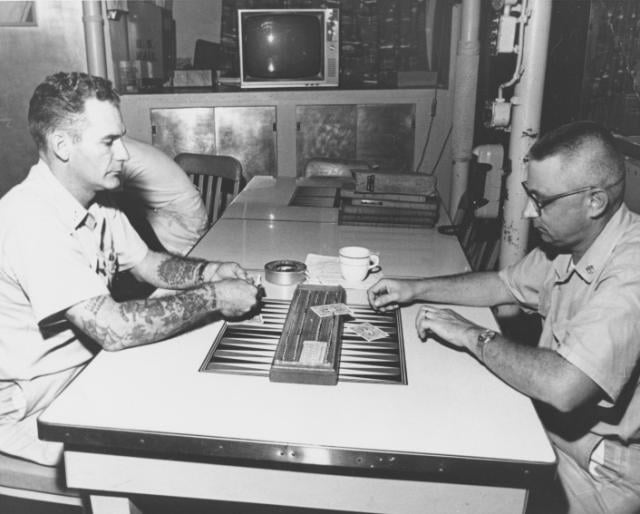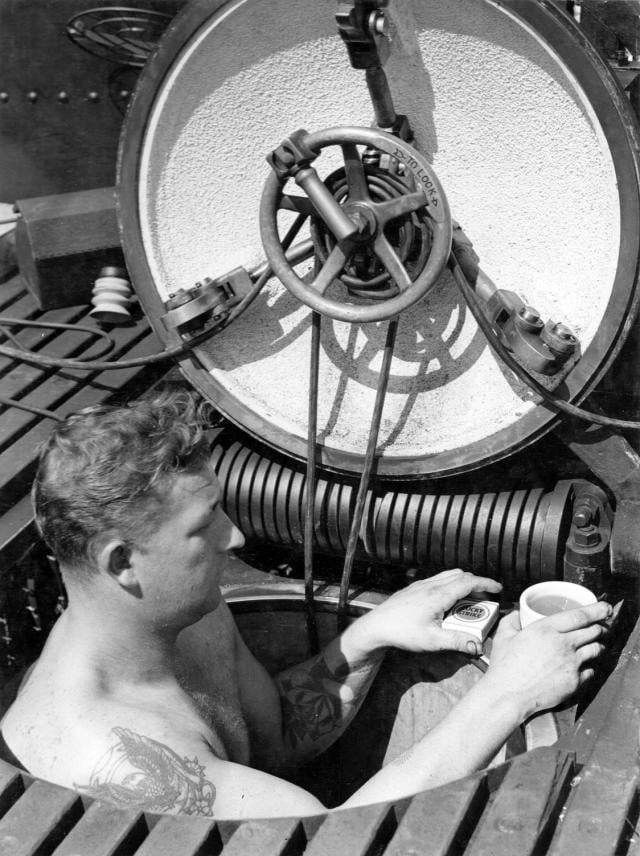1. Swallow
Legend has it that tattoos began when seven sailors from a ship called the Swallow each tattooed a swallow on his chest to mark their mutiny. Tradition, though, generally holds that a swallow tattoo is used measure how far a sailor travels. Originally, a swallow was earned every 5,000 nautical miles. Due to the enhanced capabilities of today's ships, a sailor earns a swallow every 10,000 nautical miles. Swallows often were the first birds sailors would see when nearing land, and they came represent homecoming. Another tradition was that if a sailor got a swallow tattooed on his collarbone, it would carry his soul to heaven if he drowned. The most common swallow design used today, made famous by World War II sailor-turned-tattoo artist Norman Keith Collins, is known as "Sailor Jerry." This tattoo is often confused with a sparrow tattoo, and they've become interchangeable over the years.
2. Shellback Turtle and King Neptune
Like most naval legends, no one can say for certain the origin of "the Order of Neptune" or "Shellback". Evidence traces the terms back at least 400 years. Sailors went from being "pollywogs" (inexperienced sailors) to "shellbacks," or members of Neptune's court, upon crossing the equator--and in so doing, endured intense initiation ceremonies. The tradition is still in practice today, though it is a much milder experience. The tattoo is traditionally worn on the back of a sailor's hand or the back of the calf and is marked with the date he or she was initiated.
3. Anchor
The most famous cartoon sailor, Popeye, has his distinctive anchor tattoos, one on each bulging forearm. A single anchor on the forearm (or shoulder) of a sailor actually has a couple of meanings. The less common meaning is the sailor is a merchant marine. For U.S. Navy sailors the single anchor is earned after completing the journey across the Atlantic Ocean. Similar to the crossing the equator, the Atlantic crossing is a mark of experience.
4. Fully Rigged Ship
A tattoo of a fully rigged ship can represent a sailor returning home. Today such an elaborate tat marks a voyage around Cape Horn. "Rounding the Cape" was notorious for being one of the most dangerous voyages and was feared by even the most seasoned sailors. Traditionally, the tattoo is worn on the sailor's chest or upper back.
5. Crossed Cannon
Much like the single anchor can depict a sailor's service as a merchant marine, two crossed cannon represent service on board a military vessel. Crossed cannon first appeared in the U.S. military to mark the Ordnance Department in the U.S. Army in the 1830s. As a naval symbol of military service, however, the crossed cannon tattoo predates the United States.
6. Golden Dragon
In Asian culture, a golden dragon is a benevolent force symbolizing the qualities of strength, wisdom, and wealth. Sailors voyaging to China and the Philippines tended to adopt mementoes of the culture in favorite ports. (The word "tattoo" comes from the Filipino word tatu.) The traditional Asian dragon, inked in gold, entered seafaring tattoo lore as the indicator of a sailor who had crossed the International Dateline. Upon crossing that line sailors were said to have entered "the Domain of the Golden Dragon." Unlike the equator crossing, there is no induction ceremony attendant to the International Dateline crossing. But sailors who cross it still receive a traditional certificate and earn the right to wear the golden dragon.
7. Crossed Anchors
Since the Age of Sail, boatswain's mates (BMs) have been signified by crossed anchors. Out of pride for their hard job, BMs would get a tattoo of their rating badge on the webbing between the thumb and index finger. Traditionally the tattoo is on the right hand to reflect their history as a "right arm rate." Until 1949, the rating marker for petty officers of the line in rates known as deck rates (including quartermasters and gunner's mates) were worn on the right sleeve to distinguish them. The tattoo is placed on the hand to reflect the old naval saying "all hands on deck" when petty officers of the line are called to the deck to handle what ever crisis arises.



